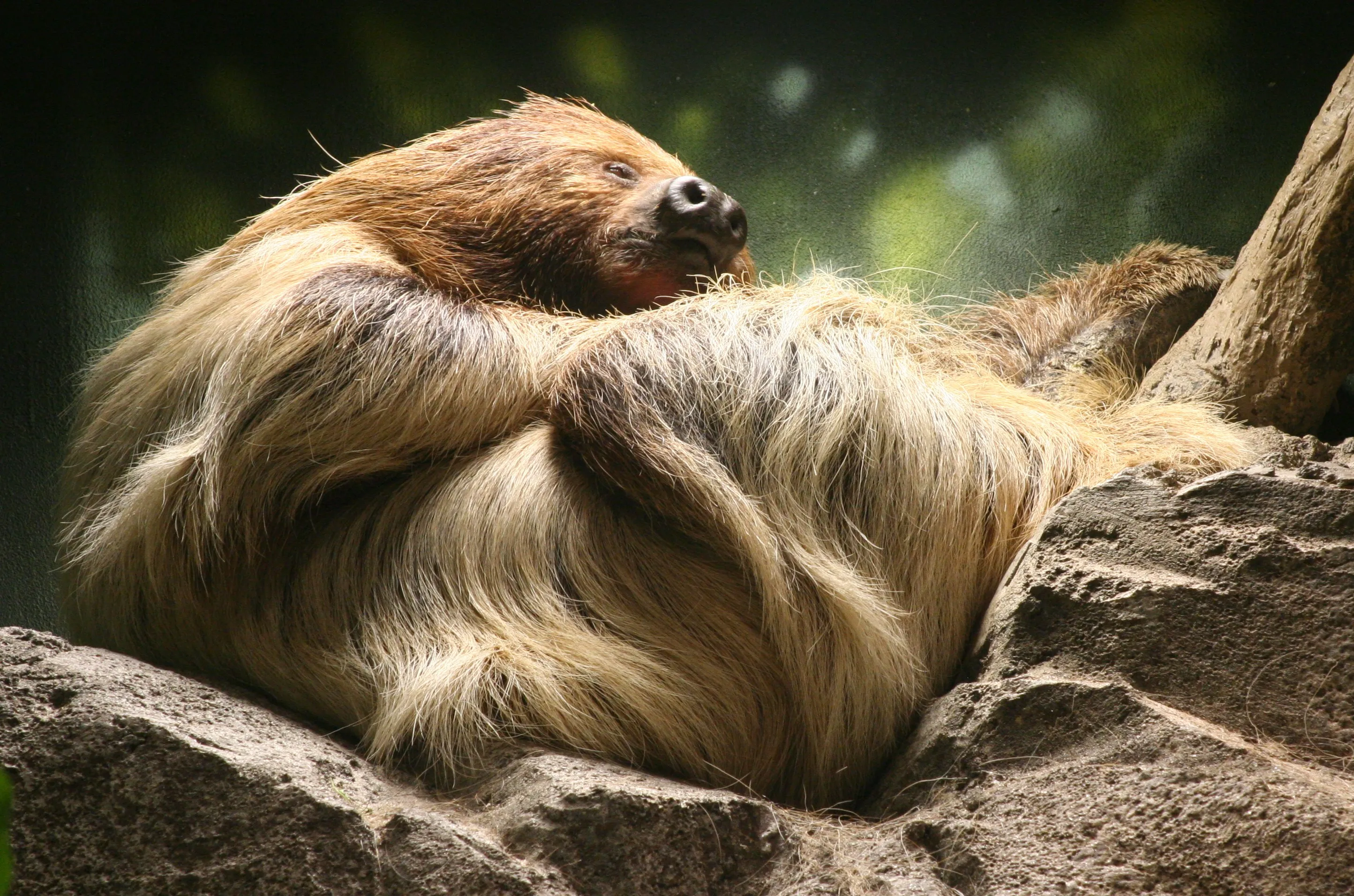
Linnaeus's Two-toed Sloth
Linnaeus's Two-toed Sloth
Linnaeus's Two-toed Sloth
In the lush Amazon rainforest of South America, lives a sloth that spends its days in leisurely motion - the Linnaeus's two-toed sloth. They spend most of their time in the trees, their lives shrouded in mystery. Let's delve into the ecology of the Linnaeus's two-toed sloth and the environment that surrounds them.
Linnaeus's Two-toed Sloth Basic Infomation

| Property | Value |
|---|---|
| Scientific Name | Choloepus didactylus |
| Taxonomic Status | SPECIES |
| Rank | SPECIES |
| Vernacular Names | Linnaeus's Two-Toed Sloth |
| Kingdom | Animalia |
| Phylum | Chordata |
| Class | Mammalia |
| Order | Pilosa |
| Family | Megalonychidae |
| Genus | Choloepus |
| Habitats | Amazon River Basin of South America |
| Descriptions | The Linnaeus's two-toed sloth is a species of two-toed sloth that inhabits the Amazon River Basin of South America, characterized by its two fingers on the forelimbs and its gray fur. |
| Conservation Status | Least Concern |

Size
They are about 21 to 29 inches (54 to 72 centimeters) long and weigh 9 to 17 pounds (4 to 8 kilograms).

Lifespan
They live for about 20 to 30 years in the wild.

Distribution
They are found in South America, including Brazil, Colombia, Venezuela, Guyana, Suriname, and French Guiana. They inhabit the Amazon rainforest.
Linnaeus's Two-toed Sloth Q&A

What kind of sloth is Linnaeus's two-toed sloth?
The Linnaeus's two-toed sloth belongs to the genus Choloepus and is one of the two-toed sloth species. As their name suggests, they have two fingers on their forelegs.
They have grayish fur, which is where their name comes from. They live in the Amazon rainforest of South America and spend most of their lives in trees. They are folivores, primarily eating leaves, and are known for their incredibly slow movements. In fact, they are one of the slowest mammals on Earth. This is because they have a very slow metabolism. They conserve energy by moving slowly and spending long periods sleeping.

Why are Linnaeus's two-toed sloths so slow?
The reason why Linnaeus's two-toed sloths move so slowly is related to their diet. They primarily eat leaves, which are low in nutrients and take a long time to digest.
To conserve energy, they move slowly and spend long periods sleeping. They also have a low body temperature, which fluctuates with the ambient temperature. This is a characteristic of animals called 'poikilotherms.' Poikilotherms do not need to expend energy to maintain a constant body temperature, so they have a slower metabolism and, consequently, slower movements.

What do Linnaeus's two-toed sloths eat?
Linnaeus's two-toed sloths mainly eat leaves from the Cecropia tree. Cecropia trees are abundant in the rainforest and their leaves are soft and easy to digest.
They also eat other fruits, such as figs, avocados, and mangoes, as well as flowers and buds. They eat only about 50 grams of leaves a day because their metabolism is so slow that they don't need much energy. They also rarely drink water, getting most of the moisture they need from their food.

[Quiz!] What do Linnaeus's two-toed sloths spend most of their time doing in the trees?
Linnaeus's two-toed sloths spend most of their time in trees... sleeping! They sleep for 15 to 20 hours a day – they are truly the champions of sleep! They spend most of their time sleeping, except when eating or defecating.
When sleeping in the trees, they hang from branches or wedge themselves in the forks of trees. Their long claws help them grip the branches securely, so they don't have to worry about falling while they sleep.

[Quiz!] How fast can a Linnaeus's two-toed sloth move?
Linnaeus's two-toed sloths are extremely slow movers on the ground. Their speed is only… about 4 meters per minute!
This is even slower than a snail. However, they are faster in the trees. Their long, sharp front claws help them grip the branches firmly, allowing them to move slowly but steadily through the canopy.

[Quiz!] Are Linnaeus's two-toed sloths endangered?
Linnaeus's two-toed sloths are currently classified as Least Concern and are not considered endangered. However, their rainforest habitat is being lost due to deforestation and agricultural development.
They are also sometimes illegally traded as pets. To protect Linnaeus's two-toed sloths, it is important to conserve their rainforest habitat and eliminate the illegal pet trade.

Would you like to become a part of the 'Animalbook.jp'?
Turn your knowledge into Q&A and share it with the world. ※Publication will be activated after purchase. Let's share information together!
Linnaeus's Two-toed Sloth Type of List

Characteristics of Linnaeus's Two-toed Sloths
- Two fingers on each foreleg
- About 21 to 29 inches (54 to 72 centimeters) long
- Weigh 9 to 17 pounds (4 to 8 kilograms)
- Grayish fur
- Mainly eat leaves
- Sleep 15 to 20 hours a day
- Very slow movers on the ground
- Can move faster in trees
Information
Congratulations! You are the first commenter!

Create Your Favorite List!
Linnaeus's Two-toed Sloth
Save the animals you love! Build your own list to quickly revisit your favorites later.

Would you like to leave a comment?
※Please note: This is for the purchase of rights to post comments within the article.
Find Your Favorites!
Our shop offers a unique and attractive selection of goods themed around various animals.
Linnaeus's Two-toed Sloth References
Linnaeus's Two-toed Sloth Introduction of media used

Davepape, Public domain, via Wikimedia Commons

Davepape, Public domain, via Wikimedia Commons

Dick Culbert from Gibsons, B.C., Canada, CC BY 2.0, via Wikimedia Commons

Help Enrich Our Animalbook.jp with Your Media!
We are constantly looking to expand and enrich our Animalbook.jp with amazing photos and videos of animals. If you have any media that you'd like to share, please contribute and help us showcase the beauty and diversity of the animal kingdom. Your submissions will be credited and featured in our encyclopedia, reaching a wide audience of animal lovers.


















